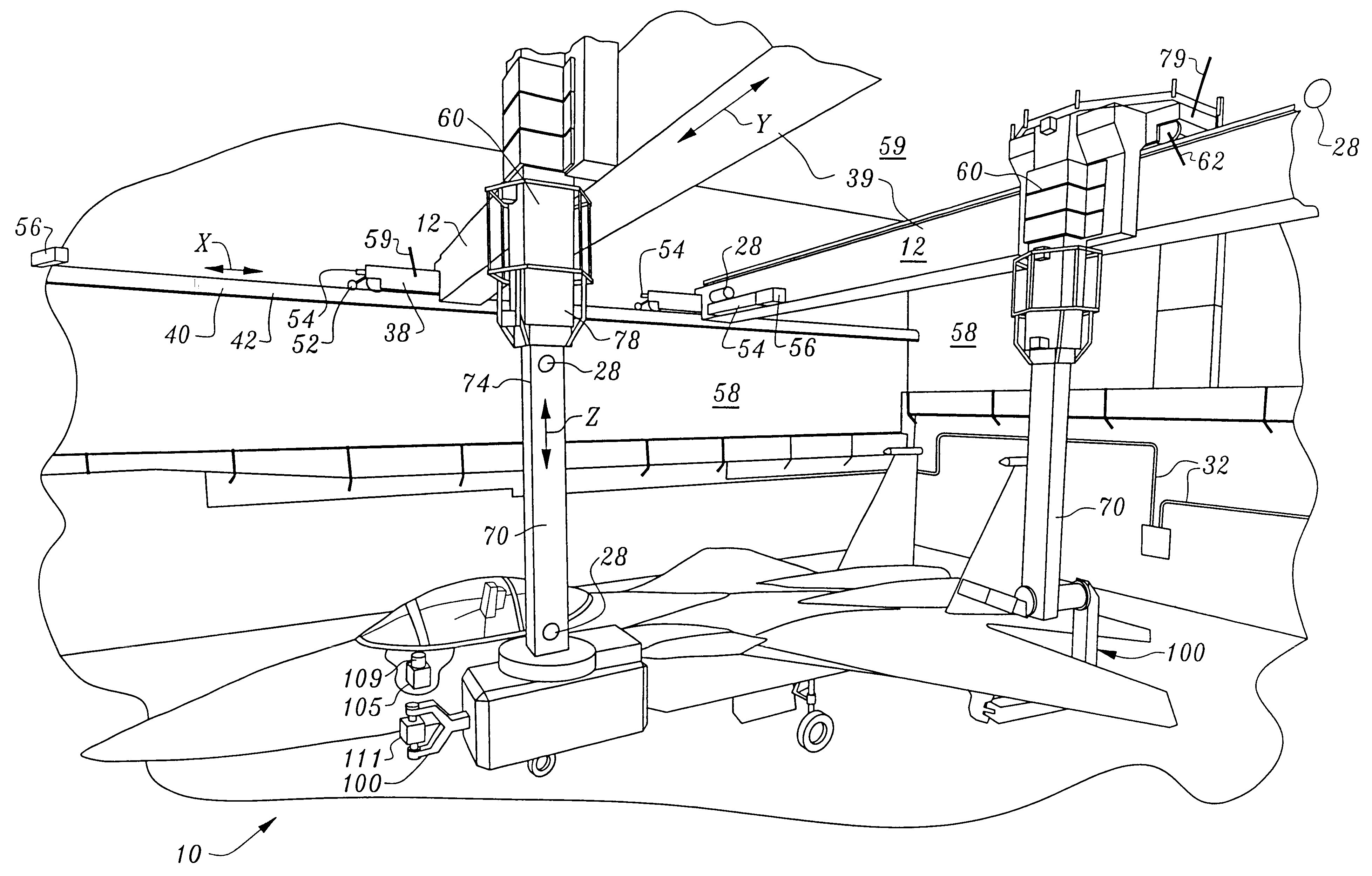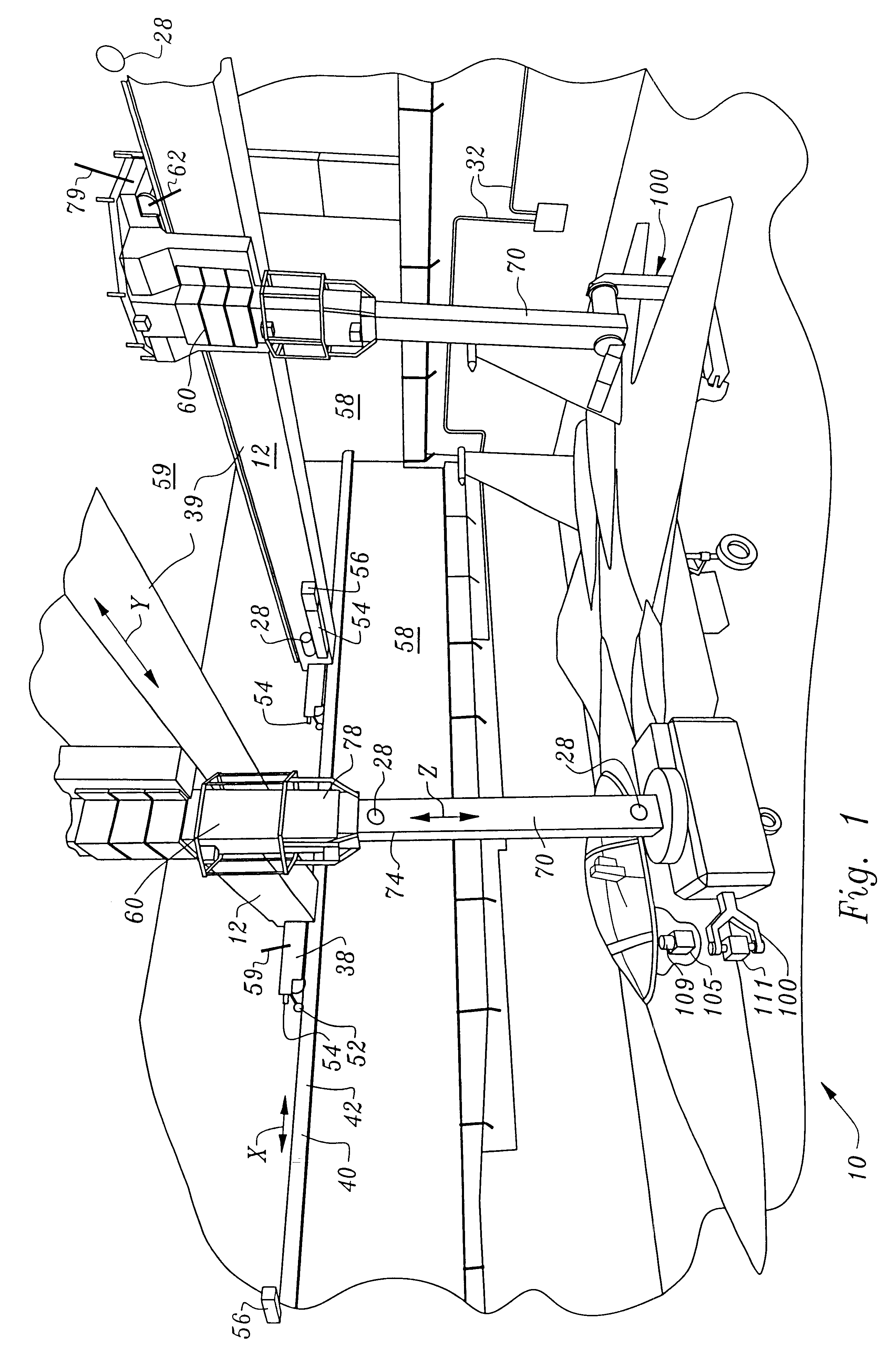Non-destructive inspection, testing and evaluation systems for intact aircraft and components and method therefore
a technology of inspection and evaluation system and aircraft, which is applied in the direction of vibration measurement in solids, instruments, processing detected response signals, etc., can solve the problems of inefficiency, cost, and inability to solve the safety problems of "aging aircraft", and the inspection and repair procedures and processes have changed little, so as to minimize the need for highly experienced personnel and facilitate use.
- Summary
- Abstract
- Description
- Claims
- Application Information
AI Technical Summary
Benefits of technology
Problems solved by technology
Method used
Image
Examples
Embodiment Construction
Considering the drawings, wherein like reference numerals denote like parts throughout the various drawing figures, reference numeral 10 is directed to the non-destructive inspection and testing system for aircraft components according to the present invention.
The Robotic Overhead Positioner (ROP), (e.g., FIG. 1) is a gantry robot that resembles an overhead crane. The ROP allows movement in three linear directions (X, Y, and Z) and three rotational directions (Yaw, Pitch and Roll to be described). Generally, to move in each of these directions, it uses a variable-speed DC motor 14 (FIG. 1A), a gearbox 16, and a drive mechanism 18 having wheels 52. Power to turn the motor (thus moving the robot) is supplied by a controller 20. Each motor 14 has an encoder 22, which tells the controller 20 the distance of travel; and it also has a solenoid energized electric disc brake 24, which keeps the robot in a frozen position whenever the controller 20 is not supplying power to the motor 14. For...
PUM
| Property | Measurement | Unit |
|---|---|---|
| length | aaaaa | aaaaa |
| length | aaaaa | aaaaa |
| depth | aaaaa | aaaaa |
Abstract
Description
Claims
Application Information
 Login to View More
Login to View More - R&D
- Intellectual Property
- Life Sciences
- Materials
- Tech Scout
- Unparalleled Data Quality
- Higher Quality Content
- 60% Fewer Hallucinations
Browse by: Latest US Patents, China's latest patents, Technical Efficacy Thesaurus, Application Domain, Technology Topic, Popular Technical Reports.
© 2025 PatSnap. All rights reserved.Legal|Privacy policy|Modern Slavery Act Transparency Statement|Sitemap|About US| Contact US: help@patsnap.com



